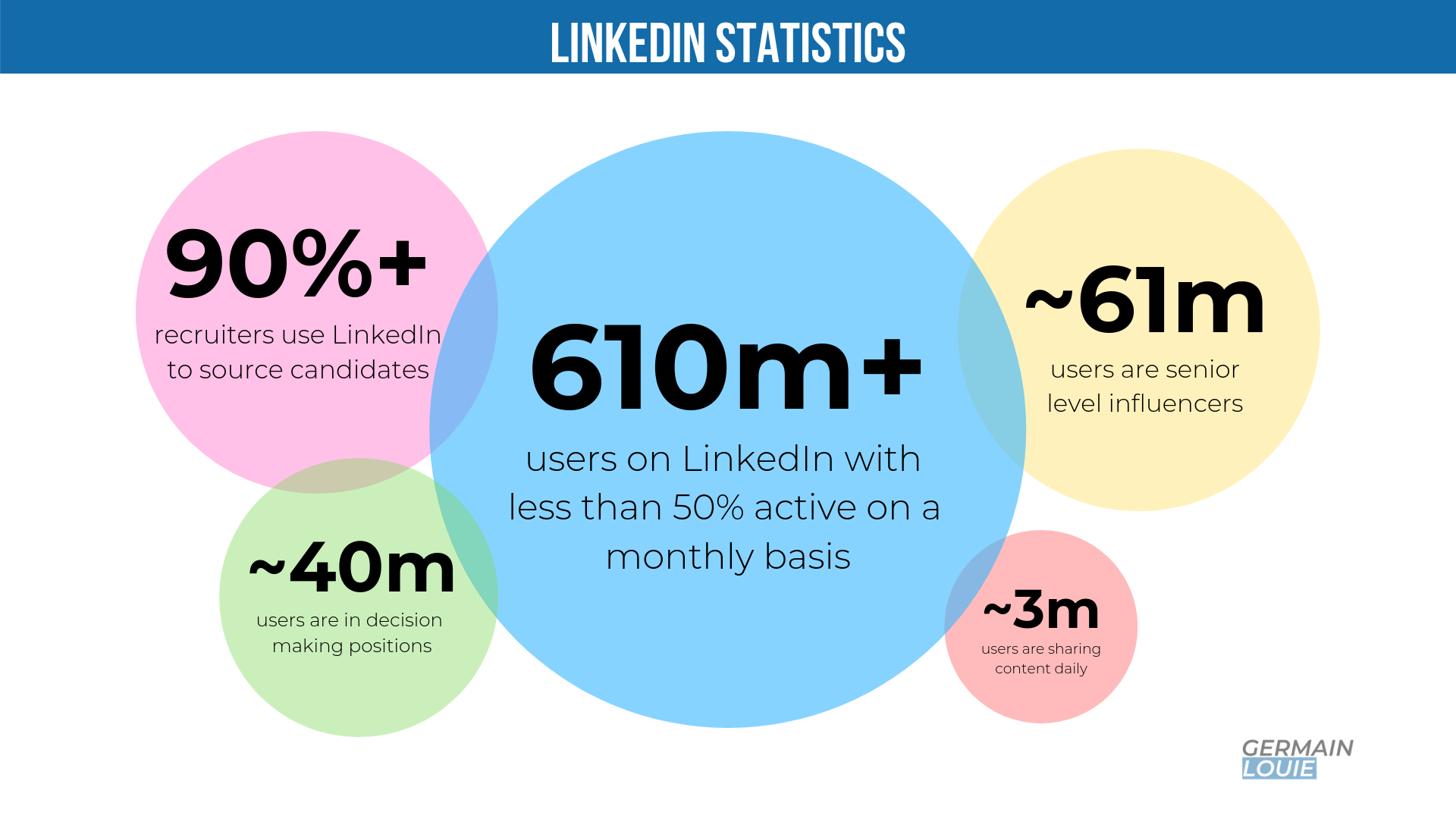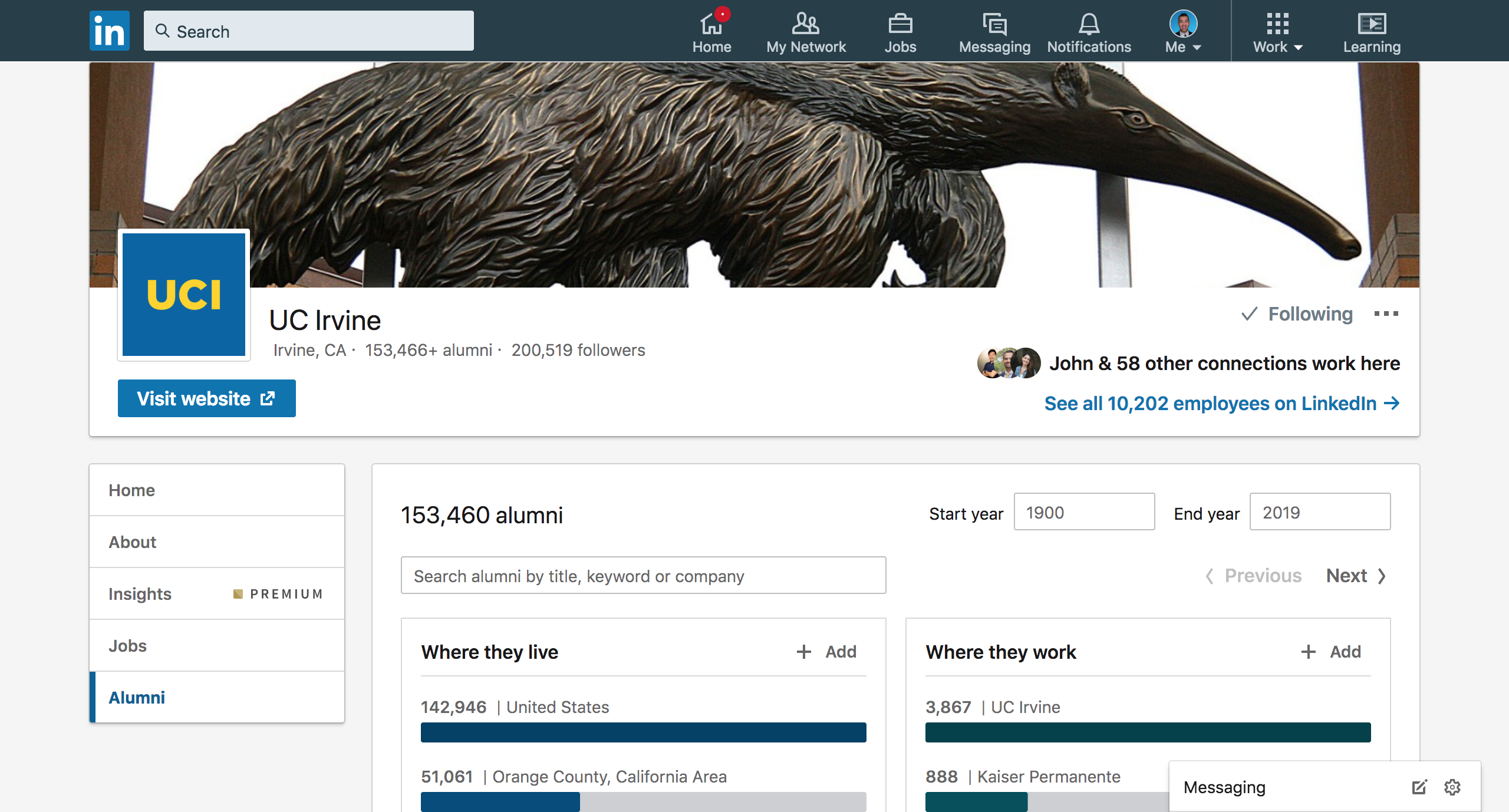Why Students Should Build a Personal Brand On LinkedIn – And How to Do It
Are you able to define your personal brand? How do you see yourself? More importantly, how do others see you?
Creating a unique personal brand is important. Whether you're searching for a new opportunity or are happy in your current role, your brand matters. Your personal brand should fascinate people and differentiate yourself from the competition. To identify your brand, spend some time to reflect on your core values and experiences that stick with you. BrandYourself refers to a personal brand as “the unique combination of skills and experiences that make you you.” As you begin to build your brand, Shelcy V. Joeseph, Forbes Contributor, shares five key points to consider: understand your value, show rather than tell, understand how much your value is worth, deliver on your value consistently and get testimonials, and increase your value through education.
As you begin to piece these points together, be forward-looking. Ask yourself, “Where do I want to be in 2 years?” This will give you a basis of how you want to frame your personal brand. The skills and values should still represent you. By doing so, you can create a strong brand that may resonate with recruiters or your dream company.
These are all important points that can also be applied to your brand on social media, specifically LinkedIn. In a previous article, RippleMatch covered some of the basic information about optimizing your LinkedIn Profile. To take things to the next level, there are some important actions you can take to really elevate your LinkedIn profile. Keep reading for some essential tips, and check out this guide I created here for some more in-depth advice.
But first: What is LinkedIn and why should I use it?
In short, LinkedIn is “the world’s largest professional network with more than 610 million users in more than 200 countries and territories worldwide.”

One common belief is that LinkedIn is seen as only a static professional network. Most students will create a profile and stop there. However, if we invest the time we spend on other social platforms (Facebook, Instagram, Twitter, Snapchat, etc.) we can create much more meaningful relationships to help prepare us for our future.
From my experience using LinkedIn, I have been able to connect with professionals around the world, enhance my education by using LinkedIn Learning (previously known as Lynda.com), build a greater sense of community, and more importantly land internship and job opportunities. Beyond my own experience, there have been a handful of other students and recent graduates like Tiffany Parra, Codey Schimelpfenig, Blessing Adogame, and Max Mirho who have succeeded in creating a strong personal brand and accessed a number of opportunities because of it.
So how do I build my brand effectively on LinkedIn?
Complete and Update your Profile
People want to see that you are a real person. Follow the basics previously mentioned to rock your profile! More importantly, continue to update your profile as you take on new experiences (jobs and volunteer opportunities!). LinkedIn serves as a digital portfolio which allows you to include digital rich media. Think photos, videos, PowerPoints, etc. highlighting some of your best accomplishments and work.
Create a Custom LinkedIn Header
Similar to a resume, you should take advantage of all the real estate on your profile. Your header is one of the first spots anyone will see when they visit your profile. This is a great spot to include external links (personal website, social media, areas of expertise, and a call to action).
.png)
My own header, as an example
Connect with Alumni and Companies of Interest
LinkedIn has made it really easy to find alumni from your university. Alumni are a great place to start building relationships as you already have a commonality with them - you went to the same school! You can navigate to your University’s alumni page and filter it based on where they live, where they work, what they do, what they studied, what they are skilled at, and how you are connected.

The alumni section on the UC Irvine LinkedIn Page
An example of a template to follow that I use when sending a connection request with a personal note to alumni could be:
“Hi [FirstName],
My name is [YourName] and I’m currently a student at [YourUniversity] studying [YourMajor]. I was excited to see your expertise in [AreaOfExpertise] working with [CompanyOfInterest]. Would you be open to helping me learn more about [Topic]?
Best,
[YourName]”
In addition to alumni, you should begin following companies of interest to stay up to date on the latest news. You never know, this could become a talking point during your next interview!
Engage with Others
This is the easiest way to begin getting noticed by other people. LinkedIn was built as a discovery platform. This means when you comment or like other posts on LinkedIn, it appears on your feed to your connections as well as the original posters network too. This is a great way to share insights and highlight your thought leadership to the community. If people like what you’re saying or are interested in your perspective, they will likely reach out to follow or connect with you too. As you begin to engage with others, you can continue to ask thought-provoking questions that genuinely interest you to enhance your education beyond the classroom.
Share Content
Whether you choose to create original content or share existing content, this is still one of the most underutilized aspects of LinkedIn. There are multiple avenues to explore when sharing content which include: short-form posts, long-form posts, articles, videos, PDFs, and live video, though the latter two are features in beta and only available to certain users. Some of the best practices when sharing on LinkedIn include: being consistent, mentioning people and companies of relevance, and utilizing hashtags. When creating content, be sure to have a hook, provide value, and have a call to action for others to continue the conversation in the comments.
One question I often get asked by students and professionals is, “what type of content should I be sharing?” Several of us, myself included, initially have self-doubt in not realizing what value we have to add to the conversation. The truth is, your perspective is unique. To get started, share about projects you’re working on, events you attend (workshops, clubs and organizations, etc.), and content you consume (books, podcasts, e-learnings). In addition, consider creating articles as part of the #StudentVoices collection. For inspiration, here is the monthly content themed calendar for 2019:

As you begin to get started in creating your personal brand on LinkedIn, remember to identify and stay true to your core values. If you need additional help getting started or advice for content ideas, feel free to contact me on LinkedIn.
----
Germain Louie is an aspiring marketer, senior at the University of California, Irvine, and LinkedIn Campus Editor and Student Learning Ambassador. He is also the host of LinkedIn Local Orange County and enjoys sharing about topics on social impact and technology, mental health awareness, and professional development. To learn more or get in contact with Germain, visit www.germainlouie.com.





